Related Research Articles
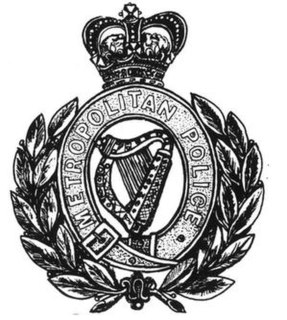
The Dublin Metropolitan Police (DMP) was the police force of Dublin, Ireland, from 1836 to 1925, when it was amalgamated into the new Garda Síochána.
Most of the police forces of the United Kingdom use a standardised set of ranks, with a slight variation in the most senior ranks for the Metropolitan Police and City of London Police. Most of the British police ranks that exist today were chosen by Home Secretary Sir Robert Peel, the founder of the Metropolitan Police, enacted under the Metropolitan Police Act 1829. The ranks at that time were deliberately chosen so that they did not correspond with military ranking, because of fears of a paramilitary force.

Avon and Somerset Police is the territorial police force responsible for law enforcement in the county of Somerset and in four districts that used to be in the defunct county of Avon: Bristol, Bath and North East Somerset, North Somerset and South Gloucestershire.

Cambridgeshire Constabulary is the local territorial police force that covers the county of Cambridgeshire and Peterborough unitary authority. It provides law enforcement and security for an area of 1,311 square miles (3,400 km2) and population of 856,000 people, in a predominantly rural county. The force of Cambridgeshire includes the cities of Cambridge, Ely and Peterborough, the market towns of Chatteris, Huntingdon, March, Ramsey, St Ives, St Neots, Whittlesey, and town and Port of Wisbech. The constabulary's logo is a crowned Brunswick star with two wavy blue lines representing two of the major rivers that flow through the area, the Cam and the Nene.
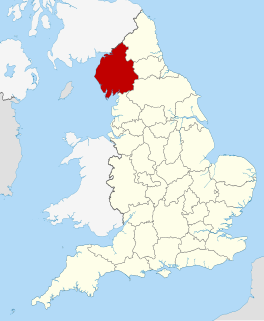
Cumbria Constabulary is the territorial police force in England covering Cumbria. As of September 2017, the force had 1,108 police officers, 535 police staff, 93 police community support officers, 25 designated officers and 86 special constables. In terms of officer numbers, it is the 7th smallest of the 48 police forces of the United Kingdom. Conversely, its geographic area of responsibility is the 7th largest police area of a territorial police force in the United Kingdom. The force area's size and its population of just under 500,000 people makes it sparsely populated. The only major urban areas are Carlisle and Barrow-in-Furness.
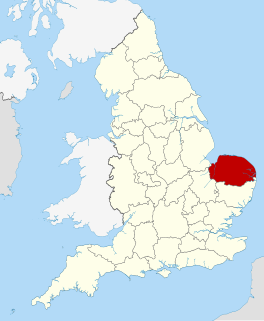
Norfolk Constabulary is the territorial police force responsible for the county of Norfolk in England. In March 2020, the force had a strength of 1,602 police officers, 193 special constables, 1,166 police staff, and 138 volunteers.
The City of Glasgow Police or Glasgow City Police was the police of the City of Glasgow, Scotland. In the 17th century, Scottish cities used to hire watchmen to guard the streets at night, augmenting a force of unpaid citizen constables. On 30 June 1800 the authorities of Glasgow successfully petitioned the British Government to pass the Glasgow Police Act establishing the City of Glasgow Police. It served Glasgow from 1800 to 1975, when it was amalgamated into Strathclyde Police.
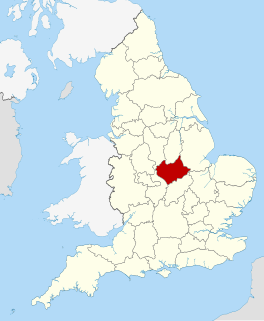
Leicestershire Police is the territorial police force responsible for policing Leicestershire and Rutland in England. Its headquarters are at Enderby, Leicestershire.
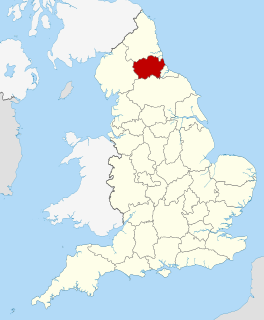
Durham Constabulary is the territorial police force responsible for policing County Durham and Darlington in North East England.

Hampshire Constabulary is the territorial police force responsible for policing the counties of Hampshire and the Isle of Wight in South East England.

Sussex Police is the territorial police force responsible for policing the counties of East Sussex and West Sussex. The force is headquartered in Malling House, Lewes, East Sussex.

Nottinghamshire Police is the territorial police force responsible for policing the shire county of Nottinghamshire and the unitary authority of Nottingham in the East Midlands of England. The area has a population of just over 1 million.

Wiltshire Police, formerly known as Wiltshire Constabulary, is the territorial police force responsible for policing the county of Wiltshire in South West England.

The Police Act 1964 was an Act of the Parliament of the United Kingdom that updated the legislation governing police forces in England and Wales, constituted new police authorities, gave the Home Secretary new powers to supervise local constabularies, and allowed for the amalgamation of existing forces into more efficient units.
Head constable was a rank used in some British and British colonial police forces, and is still used in the Indian police.

Police radio is a communications radio system used by law enforcement agencies all over the world.
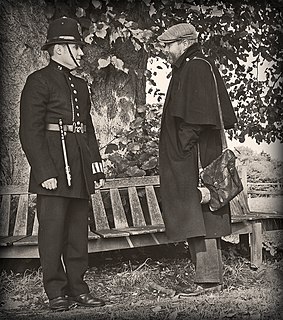
The history of law enforcement in the United Kingdom charts the development of law enforcement in the United Kingdom. It spans the period from the Middle Ages, through the development of the first modern police force in the world in the eighteenth century, and subsequent modernization of policing.
Capt. Athelstan Horn Popkess CBE, OStJ, KPM was Chief Constable of Nottingham City Police from 1930 to 1959 and as a result of his transformations in modernising policing, could be considered the twentieth century's greatest police officer. He achieved particular notoriety however following an investigation into corruption in Nottingham City Council in an incident which became known as "The Popkess Affair".
Penzance Borough Police was the police force for the borough and corporate town of Penzance, Cornwall, from 1836 to 1947. It was formed following the passing of the Municipal Corporations Act 1835, which reformed all UK boroughs, and stipulated that each appoint a Watch Committee to oversee a police force. The police force formed part of the commonality of the town's government, led by an elected Mayor, six aldermen and eighteen councillors.
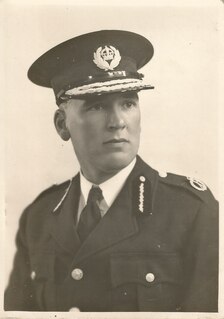
Frederick George Beale was a British police officer and Chief Constable.
References
- 1 2 Ilife (1) and Bagguley (2), Richard (1) and Wilfred (2) (1979). Victorian Nottingham: A Story in Pictures Vol. 19 – Police, Courts and Prisons. Nottingham Historical Film Unit.
- ↑ Andrews, Tom (2021). "The Founding of Nottingham's New Police". Journal of the Police History Society. 35.
- ↑ Stallion (1) and Wall (2), Martin (1) and David S (2) (2011). The British Police: Forces and Chief Officers 1829 – 2012. Bodmin: The Police History Society. ISBN 0951253867.
- ↑ Hyndman, David. Nottingham City Police: A Pictorial History, 1930 to 1960. Newark: Davage Printing Ltd.
- ↑ Andrews, Tom (2020). THE GREATEST POLICEMAN? A BIOGRAPHY OF CAPT. ATHELSTAN POPKESS CBE, OStJ Chief Constable of Nottingham City Police 1930-1959. London: Blue Lamp Books.